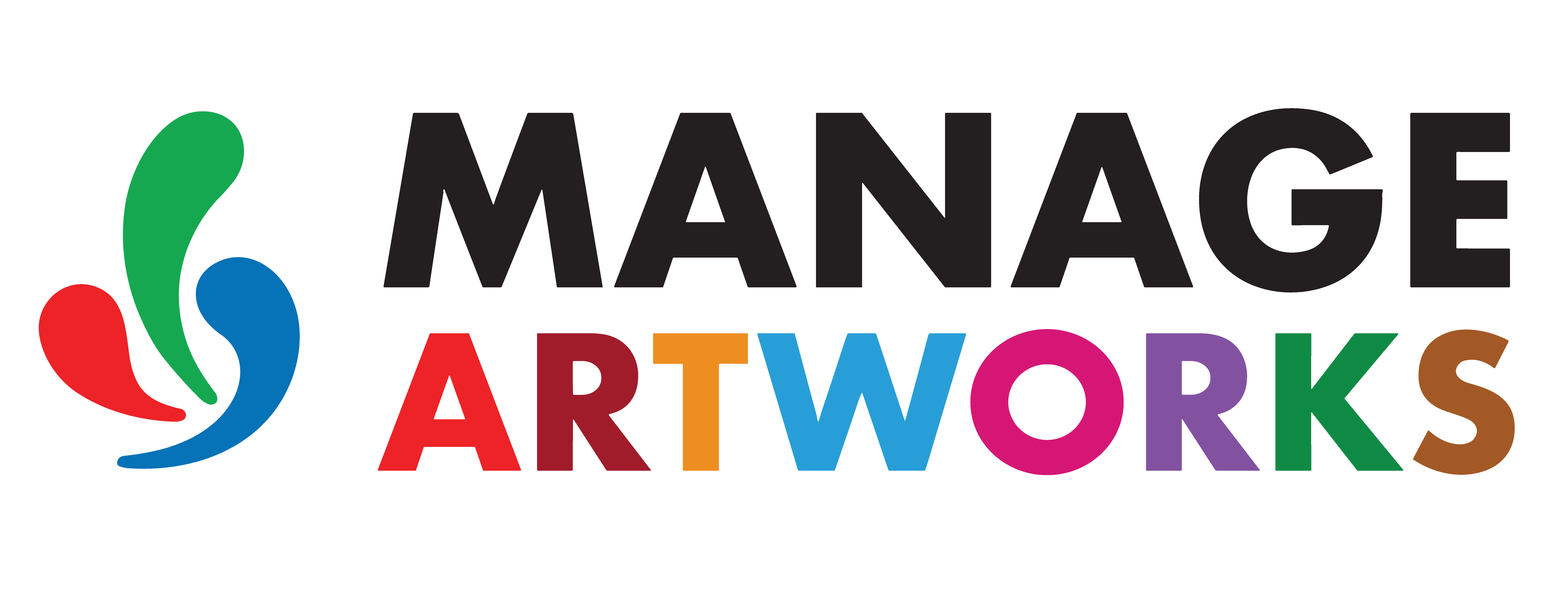Color Tool
The Color tool in ManageArtworks helps users analyze, identify, and validate colors used in packaging artwork files. It focuses primarily on CMYK and Pantone (Spot) color spaces—critical for ensuring print accuracy, brand consistency, and regulatory compliance.
This article describes the supported capabilities, common challenges, and best practices for achieving reliable color validation within the system.
Supported Features
01. Spot or Pantone Color Detection
The Color tool can detect and interpret Spot (Pantone) colors embedded within artwork files exported in PDF/X standards.
- Detects Spot or Pantone colors embedded in PDF/X-compliant files. PDF/X preserves spot color metadata during export.
- Identifies overprint settings when files are properly exported.
Why It Matters for Proofing?
Spot colors are directly tied to brand identity (e.g., Coca-Cola Red, Tiffany Blue). If a Spot color is accidentally converted to CMYK or RGB, the printed artwork may not match brand or compliance standards. By detecting these colors, the users can ensures accurate brand representation and consistent color reproduction across print runs.
02. CMYK Color Detection
CMYK (Cyan, Magenta, Yellow, and Key/Black) represents the actual inks used in print production. Unlike RGB—which is intended for digital screens—CMYK defines how colors appear on physical materials.
The Color tool displays CMYK values used in artwork files, enabling prepress and QA teams to:
- Identify color mismatches
- Review ink usage levels
- Detect unintentional RGB or web-only elements
This helps users predict how colors will behave during printing, especially in gradients or low-contrast regions.
Why It Matters for Proofing?
Accurate CMYK validation ensures the digital proof reflects real-world print results. It helps prevent visual inconsistencies such as:
- Dull or faded colors
- Oversaturated tones
- Loss of contrast during printing
03. Ink Coverage and Color Densitometer
The Color tool also provides insights into ink coverage and color density for detected CMYK and Spot colors.
- Ink Coverage indicates how much of the artwork area is covered by a specific ink.
- Color Densitometer measures the optical density or strength of that color.
- Helps verify total ink coverage and ensure it remains within acceptable thresholds (typically ≤ 300%).
- Enables detection of over-inking or bleed risks before print production.
Why It Matters for Proofing
Excessive ink coverage can cause issues such as smudging, misregistration, or uneven drying. By reviewing CMYK breakdowns and density values, teams can optimize print output, reduce rework, and maintain consistent color quality across all substrates and print batches.
04. Overprint Feature
Overprint is a printing setting in which one color is printed on top of another, instead of “knocking out” (removing) the underlying color. This technique is often used to achieve specific visual effects, improve registration accuracy, or handle elements like black text over colored backgrounds.
The Color tool in ManageArtworks can detect and interpret overprint attributes embedded in PDF files.
 | Note: Overprint information is preserved only in vector-based PDFs. If an artwork is flattened, rasterized, or scanned, overprint settings may be lost and cannot be detected by the system. |
Best Practices
01. Embed Pantone Colors in PDF (Adobe Illustrator / CorelDRAW)
Accurately embedding Pantone colors ensures consistent color reproduction across different devices and print outputs. This section explains how to correctly embed and preserve Pantone (Spot) colors in artwork files exported from Adobe Illustrator and CorelDRAW.
🎨 Adobe Illustrator
- Open the Swatches panel.
- Click Swatch Library → Color Books → Pantone Solid Coated.
- Apply the selected Pantone color to the desired artwork elements.
- In the Swatch Options, ensure the Color Type is set to Spot Color.
- When exporting, choose PDF/X-1a or PDF/X-4, and enable the option Preserve Spot Colors.
🖊️ CorelDRAW
- Open the Color Palette Manager.
- Load a Pantone color book (for example, Pantone Solid Coated).
- Assign the Pantone color to the required objects in your design.
- Use the Objects Docker to verify that the color type is Spot.
- Export the artwork as a PDF/X file, ensuring that the color profile and spot colors are retained.
 | Note: Avoid converting Spot colors to CMYK during export if you want to retain accurate Pantone color detection and validation in downstream tools such as the ManageArtworks Color Analyzer. |
02. Assign Distinct Spot Colors for Technical Layers
To simplify layer identification during proofing and printing, assign unique Pantone (Spot) colors to technical layers such as keylines, dielines, or Braille.
| Layer Type | Example Pantone Color | Purpose |
|---|---|---|
| KLD (Keyline/Dieline) | Pantone 280 C – Blue | Used to define cutting or folding lines |
| Braille | Pantone 200 C – Red | Used to mark embossed or raised text areas |
Best Practices
- Name layers descriptively (e.g.,
KLD_Layer,Braille_Layer) and keep them separate. - Assign distinct Spot colors to make layer-level identification easier during analysis and print preparation.
- These distinctions assist printers in applying special treatments such as embossing, die-cutting, or varnishing.
 | Note: Pantone color names can be renamed to custom brand-specific names (for example, Pantone 485 C → Brand Red). However, it’s recommended to retain the original Pantone reference alongside the custom name to prevent confusion during print production. |
